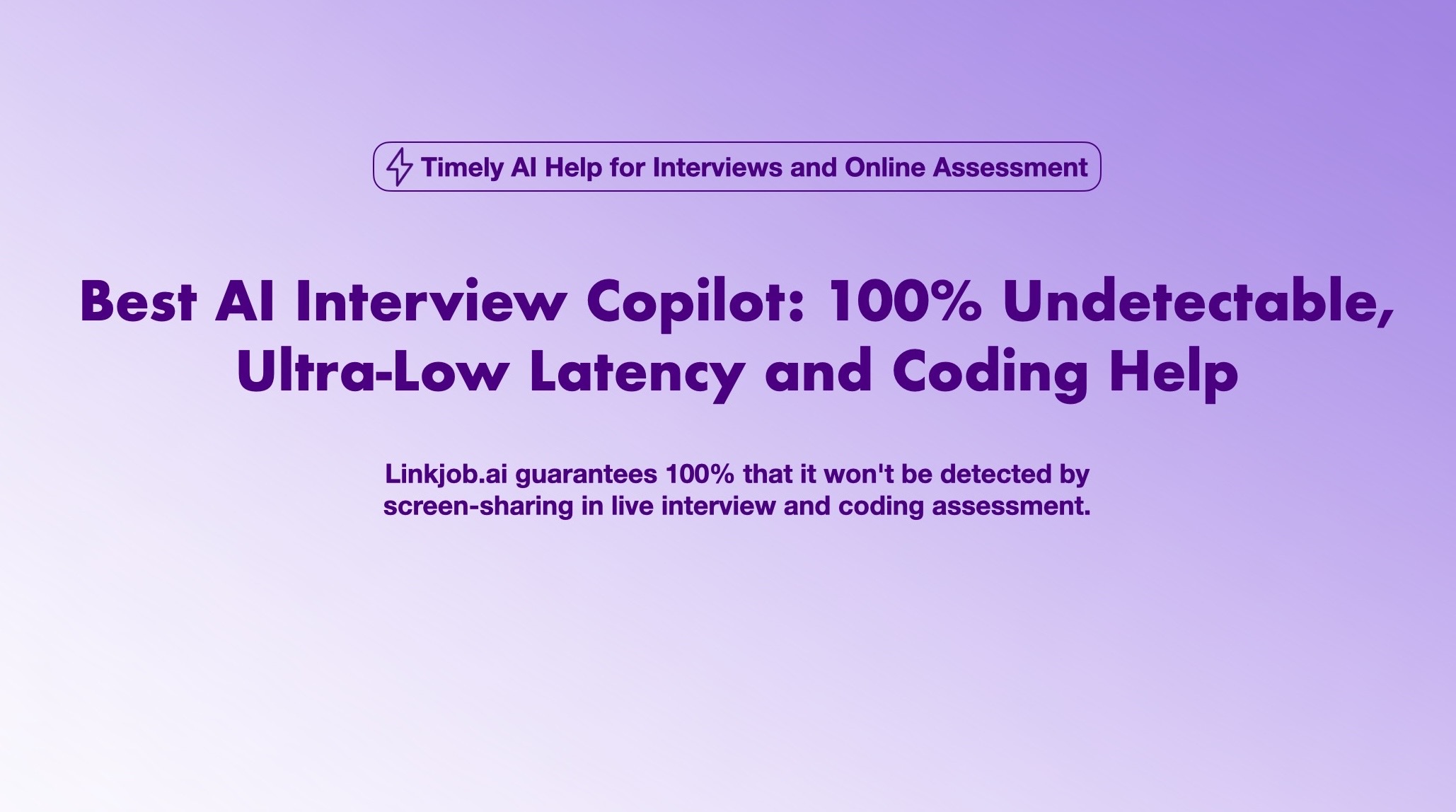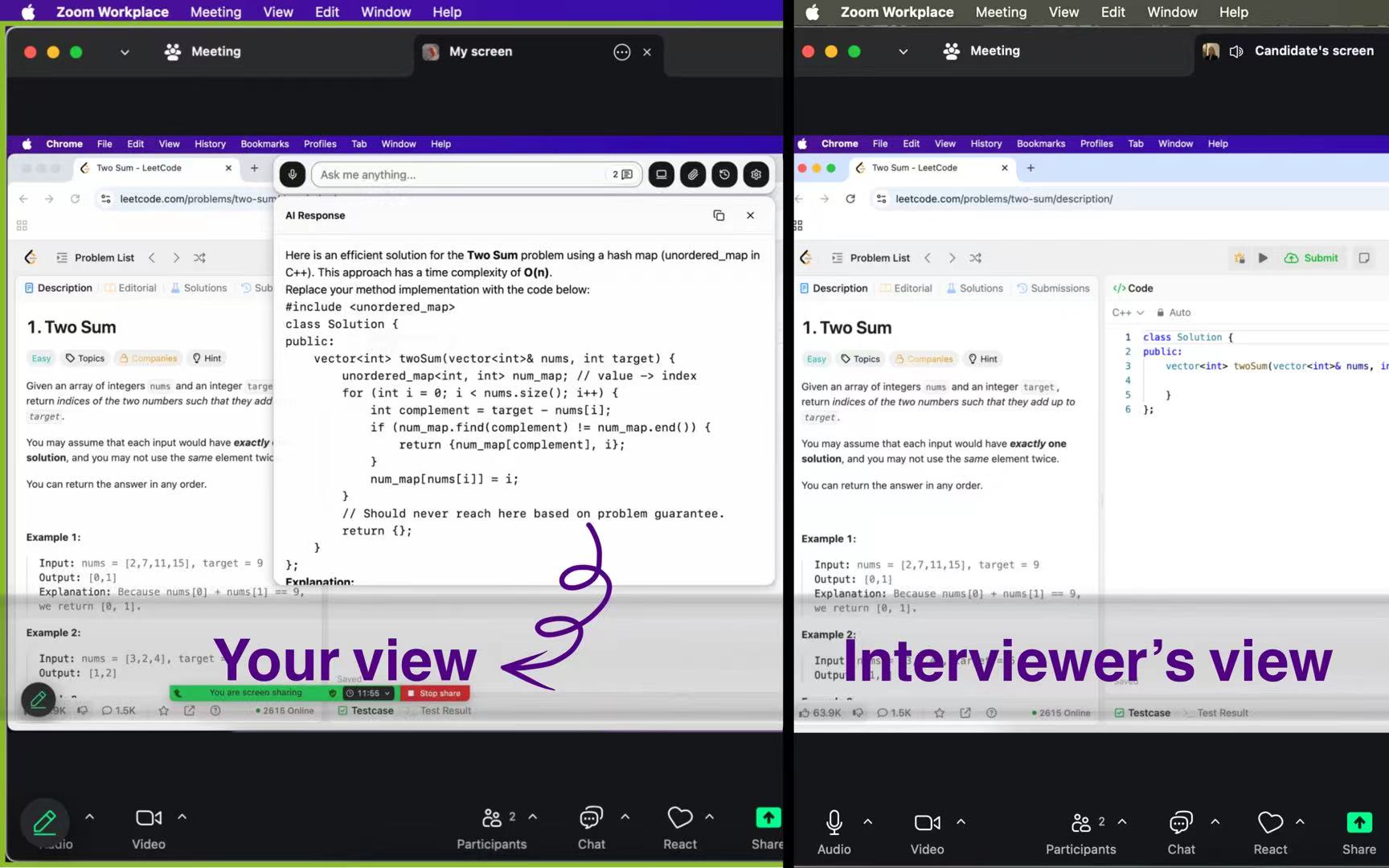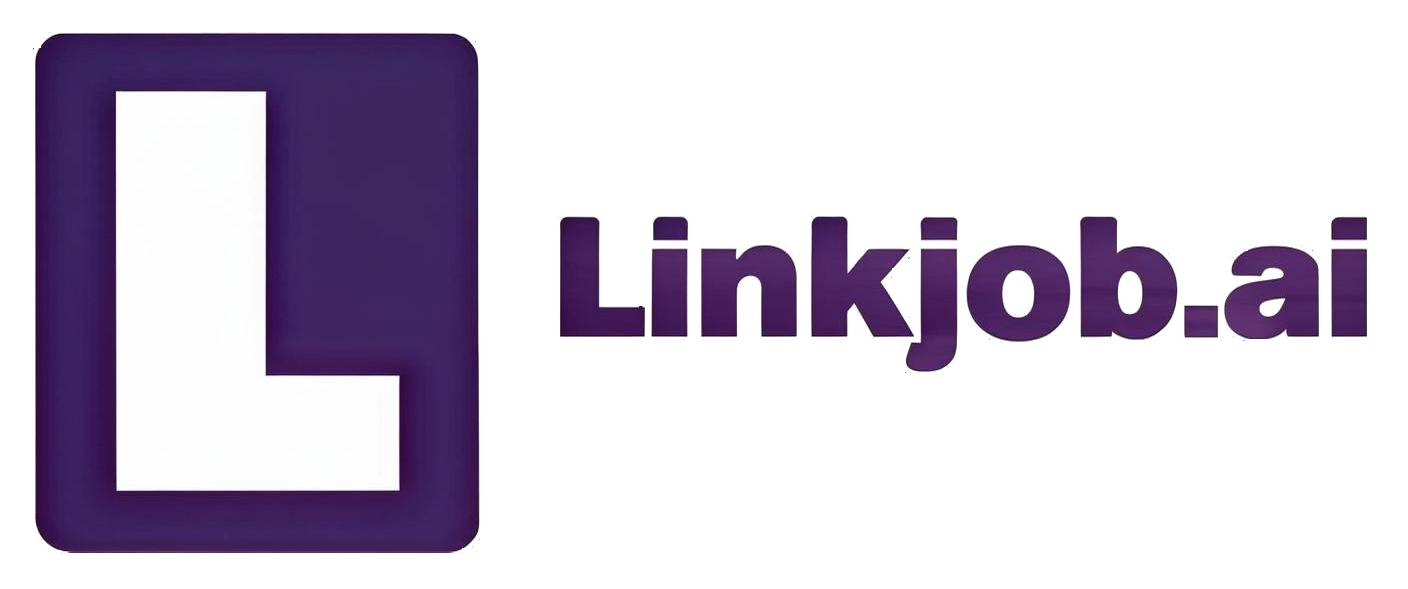Here's the Secret Sauce I Used to Win Next.js Interview Questions 2025

I once ran into some trouble with Next.js interviews because the questions often caught me off guard. I quickly realized that simply memorizing facts wasn't enough. What you really need is a set of strategies to apply what you know to real-world problems. In this article, I'll share how I figured out a new approach that will help you confidently handle any Next.js interview. I'll walk you through the fundamental and advanced Next.js interview questions I've encountered, then break down the tips and strategies to solve them step-by-step.
I have to say, Linkjob.ai is really incredibly useful. During the interview process, it's completely invisible—even if the interviewer requires screen sharing, the other party can't see at all that I'm using AI.
Next.js Interview Questions Overview
Common Topics
When interviewing for a Next.js role, I've noticed that interviewers often start with the basics. This is because they want to see if you truly understand what Next.js is and how it differs from plain React. Here are the most common foundational topics I've encountered:
What is Next.js, and how does it differ from React?
How does Server-Side Rendering (SSR) work in Next.js?
What is Static Site Generation (SSG), and when should you use it?
Can you explain Client-Side Rendering (CSR) and its use cases?
How does Next.js improve SEO and performance compared to other frameworks?
The core of these five questions is understanding how Next.js provides multiple rendering strategies on top of React to solve performance and SEO issues. Essentially, Next.js extends plain React, which relies solely on Client-Side Rendering (CSR), by adding powerful Server-Side Rendering (SSR) and Static Site Generation (SSG) capabilities.
CSR is great for highly interactive applications but can negatively impact initial page load time and SEO because the browser has to load all the JavaScript first.
SSR addresses this by pre-rendering the HTML on the server for every request, which significantly speeds up the first paint and allows search engines to more easily crawl the content, thus improving SEO.
SSG goes a step further by generating static HTML files at build time, resulting in near-instant load times. This approach is ideal for sites where content doesn't change frequently.
The biggest advantage of Next.js is that it gives you the flexibility to choose the most suitable rendering method for each individual page. This not only leads to a significant boost in web performance but also makes SEO optimization effortless.

Advanced Concepts
Next.js interview questions in 2025 often go beyond the basics. I saw a lot of focus on new features like the App Router and Server Components. Interviewers wanted to know if I could handle real-world scenarios.
The App Router, introduced in Next.js 13, replaces the old /pages folder with an /app directory. I learned to explain how layout.tsx and page.tsx work together.
Server Components run only on the server. They help reduce the client-side bundle size and boost performance.
Middleware questions came up, too. I practiced explaining how to use middleware for authentication, redirects, and even A/B testing.
Overall, the key focus of the advanced Next.js concepts is to test your understanding of the framework's modern architecture and how its features work together to create high-performance applications. Interviewers want to see that you're familiar with the new App Router and its structured approach to routing. This leads into an evaluation of your grasp of Server Components, the core performance-enhancing feature designed to reduce client-side JavaScript. Finally, they'll ask about Middleware to see if you can handle server-side logic and crucial tasks like authentication and redirects at the request level, proving you can manage the full lifecycle of a Next.js application.
Routing and Data Fetching
Routing and data fetching are at the heart of most next.js interview questions. I made sure I could answer questions like:
How does file-based routing work in Next.js?
What is a dynamic route, and how do you use
[id].jsfiles?How do you fetch data using
getStaticProps,getServerSideProps, and client-side methods likeuseEffect?
Aspect | What I Focused On | Example |
|---|---|---|
Routing | File-based routing, dynamic routes, and client-side navigation with Link. |
|
Data Fetching | SSG, SSR, ISR, and client-side fetching. |
|
Caching Strategies | How to cache API responses and balance SSR/SSG trade-offs. | Used memory-cache for API routes to boost performance. |
I realized that staying up to date and practicing these topics regularly made a huge difference. Structured mock interviews, especially those with follow-up questions, helped me get comfortable with both expected and surprise questions.
Now that we've covered the core topics for both foundational and advanced Next.js questions, let's talk about some practical strategies for answering them. I'll start with the simpler questions and then show you how to handle the more difficult ones.

Answering Common Questions
Direct Approaches
In reality, most common questions can be handled with consistent practice and by staying up to date with Next.js's latest developments. Nevertheless, I've broken down my specific approach into a few key points for you:
I practiced coding exercises focused on Next.js features. This hands-on approach helped me understand the framework deeply.
I kept up with the latest Next.js releases. Staying current meant I could talk about new features like the App Router or Server Components.
I built personal projects. These gave me real-world examples to share during interviews.
I reviewed common debugging scenarios. I learned how to explain my troubleshooting process clearly.
I prepared concrete stories from my past work. These stories showed my problem-solving skills.
I studied both technical and behavioral interview questions. This helped me stay well-rounded.
I focused on understanding core concepts, not just memorizing facts.
I practiced discussing real-world challenges I faced with Next.js.
Tip: When I answered Next.js interview questions, I always tried to connect my response to something I had built or fixed. Interviewers liked hearing about real problems and solutions.
Quick Tips
I found that small changes in my preparation made a big impact. Here are some quick tips I used to boost my performance:
I wrote out answers to common questions and practiced saying them aloud.
I used AI-powered interview prep tools to simulate interviews. These tools gave me instant feedback and helped me spot weak areas.
I asked friends to quiz me with unpredictable questions. This helped me think on my feet.
I kept a notebook of tricky questions and my best answers. Reviewing this before interviews helped me stay sharp.
I focused on clear, simple explanations. I avoided jargon unless the interviewer asked for it.
Improving Responses
Getting feedback was the hardest part for me. I wanted to know exactly where I could improve, but most practice sessions felt too generic. I changed my approach by using structured mock interviews and feedback systems.
I chose platforms that tailored practice interviews to my role and skills. This made each session relevant to the types of next.js interview questions I actually faced.
I looked for tools that adjusted questions based on my answers. This dynamic approach kept me engaged and helped me think deeper.
After each mock interview, I reviewed feedback that highlighted specific strengths and areas for improvement. This focused feedback helped me make real progress.
I standardized my feedback criteria. I made sure I measured my answers against clear benchmarks, so I could track my growth over time.
I joined workshops and calibration sessions to learn unbiased assessment techniques. This helped me understand what interviewers look for and how to present myself fairly.
I used structured evaluation templates to collect feedback. This made it easier to compare my performance across different sessions.
Handling Advanced Questions
Scenario-Based Problems
When I faced advanced next.js interview questions, I noticed interviewers liked to present real-world scenarios. They asked me to build applications with features like dynamic routing, CRUD operations, authentication, and cloud integration. For example, I once had to design a blog app with comments and categories. Another time, I needed to set up serverless functions for user authentication and database access.
To tackle these problems, I broke each scenario into smaller tasks. I listed the main features, then mapped out the steps for each one. I started with routing, then added authentication, and finally connected to the database. Practicing these scenarios helped me understand how to combine Next.js concepts in practical ways.
Debugging and Troubleshooting Techniques
Debugging is a big part of advanced interviews. I always prepared by reviewing common issues, like broken routes or failed API calls. When I hit a problem, I followed a simple process:
Step | What I Did |
|---|---|
Identify the issue | Checked error messages and logs |
Isolate the cause | Disabled features one by one |
Test solutions | Tried fixes in small steps |
Communicate clearly | Explained my thought process to the interviewer |
I made sure to stay updated on Next.js changes. I practiced with mock interviews that included troubleshooting questions.
Staying Composed
High-pressure interviews can feel overwhelming. I learned to stay calm by simulating real interviews and treating practice sessions seriously. Here are some techniques that worked for me:
I rotated problem difficulty to build mental toughness.
I reflected on each session to spot areas for improvement.
I rehearsed answers to common situational questions.
I listened carefully and asked for clarification when needed.
I kept my answers concise and relevant.
During live interviews, I found that real-time AI support could help me recover from mistakes. The AI listened, detected the question, and suggested answers based on my resume and the job description. This support made it easier to handle unexpected questions and stay composed.
Ready to Turn Your Next.js Skills into Cash? It's time to use your secret AI weapon.
You've mastered the winning strategies for your Next.js interview, but theory alone isn't enough, you need confidence in a real-world setting.
Use Linkjob's AI-powered mock interview feature to practice and get comfortable with any question. During the actual interview, it can provide real-time, accurate reference answers, helping you respond perfectly and with poise.
Standing Out in Interviews
Showcasing Experience
When I want to impress interviewers, I always focus on showing my real-world Next.js experience. I do not just talk about what I know, I show what I have built. Here is how I make my experience stand out:
I build and discuss projects that use routing, data fetching, and static site generation.
I explain how I optimize performance with code splitting, lazy loading, and caching.
I share stories about integrating external APIs and handling errors on the server side.
I talk about using Context API or Redux for state management in my apps.
I describe how I design systems for scalability and deploy with serverless solutions.
I answer behavioral questions by highlighting teamwork, problem-solving, and adaptability.
I also practice reviewing and debugging Next.js code. Sometimes, I get a sample project with bugs and need to fix them on the spot. I explain my thought process and suggest improvements. This shows I can handle real challenges, not just theory.
Discussing New Features
Interviewers love to hear about the latest features. I make sure I can talk about things like Incremental Static Regeneration (ISR), the App Router, and internationalization (i18n). I explain how I used these features in my projects. For example, I might describe how ISR helped me update content without redeploying the whole site. I also mention how I keep learning about new releases and try them out in side projects. This shows I stay current and curious.
Personal Branding
I know that how I present myself matters as much as my technical skills. I start every interview with a clear, memorable introduction. I say who I am, what I do, and what makes me unique. I avoid jargon and use simple language. I support my introduction with real examples from my work. I practice my delivery so I sound confident and natural. I use stories to make my answers stick. Even in remote interviews, I pay attention to my tone and body language. I want interviewers to remember me as someone who communicates well and brings value to the team.
FAQ
What’s the best way to prepare for Next.js interview questions?
I always start by building small projects. I use mock interviews with follow-up questions. This helps me get comfortable with both technical and behavioral questions.
How do I handle unexpected or tricky Next.js questions?
I break the question into smaller parts. I talk through my thought process. If I get stuck, I ask for clarification. Sometimes, I use real-time AI tools for instant answer suggestions.
What topics should I focus on for advanced Next.js interviews?
I focus on the App Router, Server Components, middleware, and performance optimization. I practice scenario-based problems. I also review debugging steps and system design questions.
How can I improve my answers during practice?
I record myself answering questions. I listen for clarity and confidence. I use AI-powered mock interviews that give instant feedback and ask follow-up questions. This helps me spot weak areas and improve quickly.

